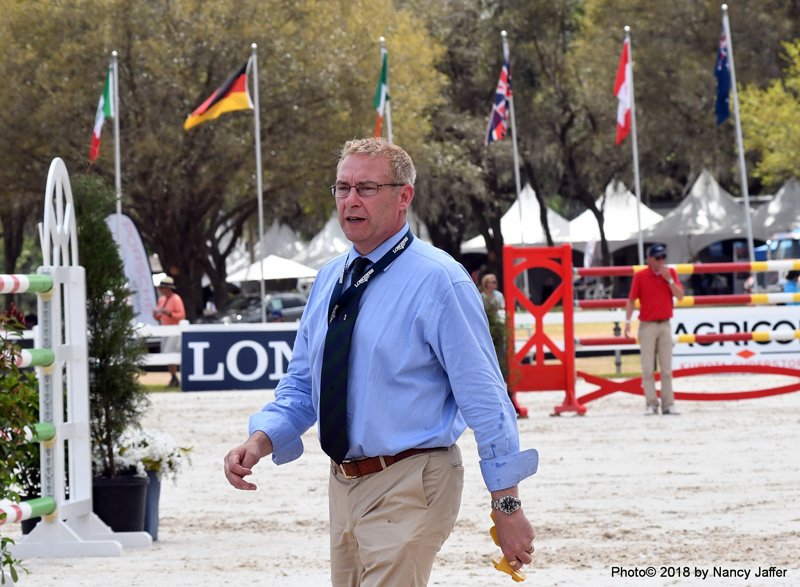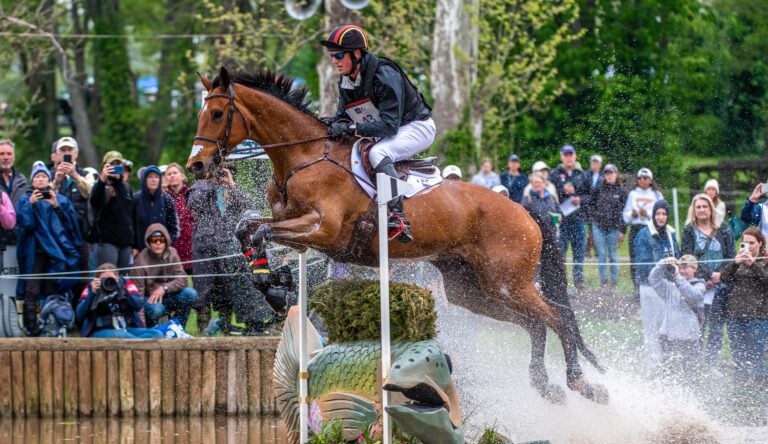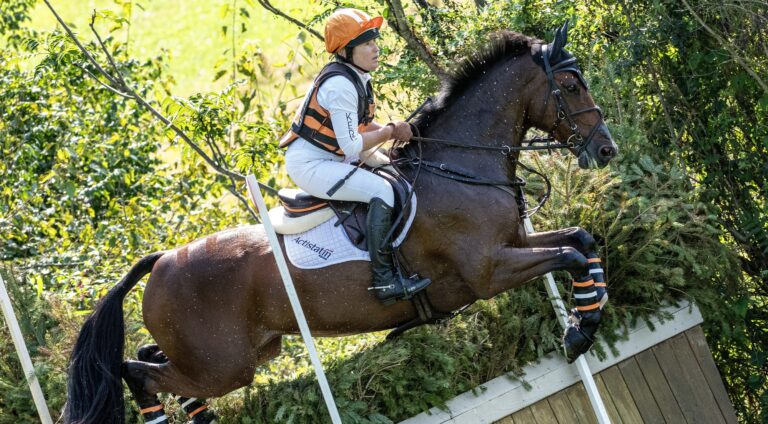With a crowd filling the grandstands and VIP tents, the pressure is always on to produce an exciting competition. While part of that is up to the riders, the course designer is the person who lays the table, so to speak. The designer must provide a challenge, so the route is not too easy, but it’s also important to have a jump-off against the clock. British course designer Kelvin Bywater had a few anxious moments after 15 riders had gone and no one was fault-free. He wound up with three in the tie-breaker, but it was a while before he could breathe easy. After the class was over and all had gone well, he was happy to speak with Nancy Jaffer about how his afternoon went.
Also, be sure to check out the complete report from the class!

Q: This reminds me of the big class earlier in the season elsewhere in Florida that you designed in which there were only two clear after the first round—and the second was the final rider in the lineup!
A: It was a little bit the same. There was a bunch of riders on four faults today that I thought would go clear, so there could have easily been six to eight (in the jump-off.) The three that jumped clear jumped amazingly good first rounds. And those who had four faults were really unlucky.
Q: The arena is different than last year, in that it has all-weather footing instead of grass. Did that make a difference?
A: I think the footing here has jumped brilliantly this week. It’s great fences, an amazing venue. It’s a lovely arena, there’s a little bit of slope on it that allows you to run the horses a little bit and at the end of the day, it was a proper World Cup qualifier. All credit to the organizers. I think they’ve done an absolutely brilliant job and should be supported in the USA. It’s a perfect setting for a top international show.
Q: Were you nervous until you had your first clear?
A: I’m always nervous until the last horse has jumped. I probably ride the horses myself inside as much as the riders ride them. I want it to be a good class, and you ride a fine line between too many clears or not enough clears. But as long as it’s good sport, as long as the public enjoys what they see and the horses can come out tomorrow and jump again, then if they have a rail down on this particular day, they have a rail down.
Q: This was an important class because it was the final qualifier for the Longines FEI World Cup™ Jumping Finals in Paris next month.
A: That puts a lot of pressure on the riders. There were a couple of them for whom the last few points would have been important. Pressure is a big factor. If you’re nervous, the horse feels it and makes life much harder.
Q: The jump-off was very interesting because it had twists and turns and a long gallop as well.
A: It hopefully gives a little bit of a test to all the horses in the field. Just because you went clear in the first round doesn’t mean you’ve got it in the bag. You’ve still got to jump well in the second round. I’d have loved to have seen six in the jump-off. At the same time, the horses that had four faults, it was little rail here, a little rail there. The crowd seemed to be well into it, so for me, that’s good sport.










